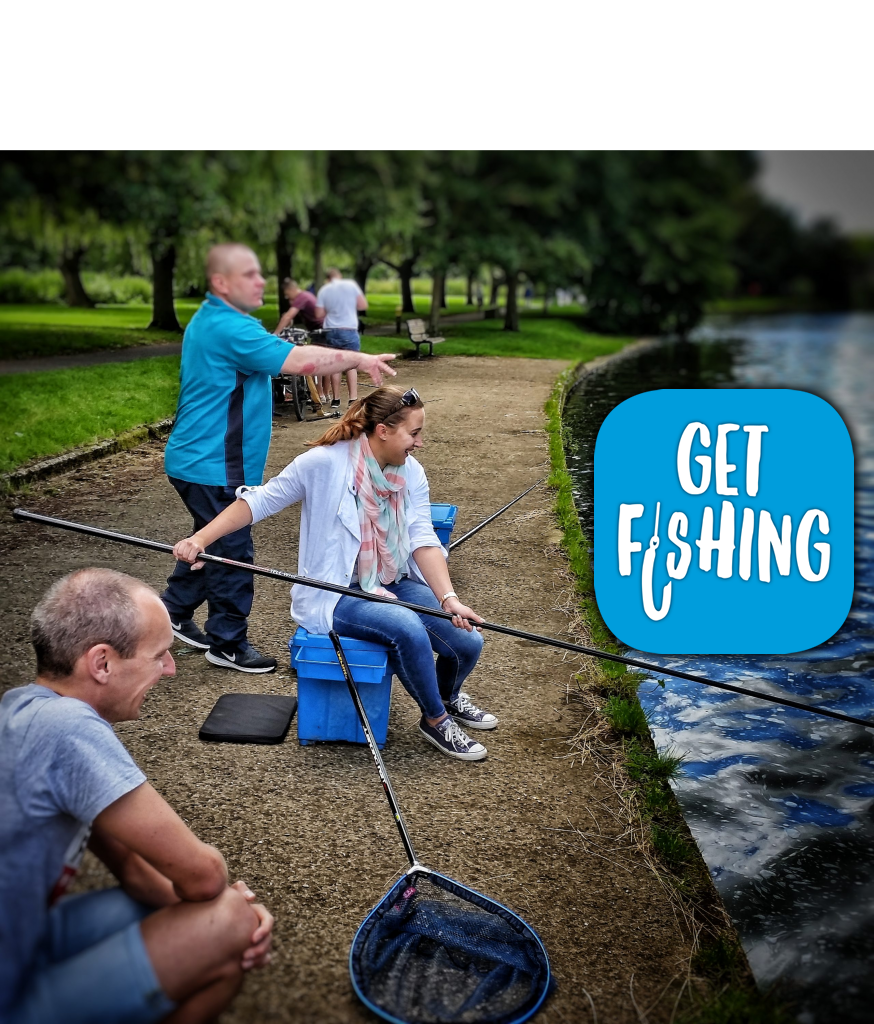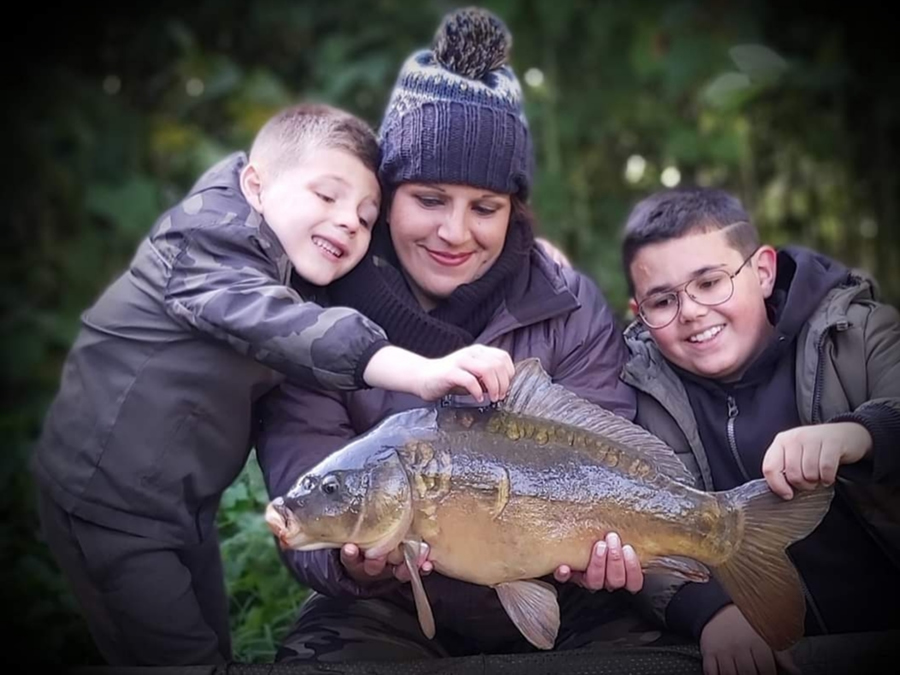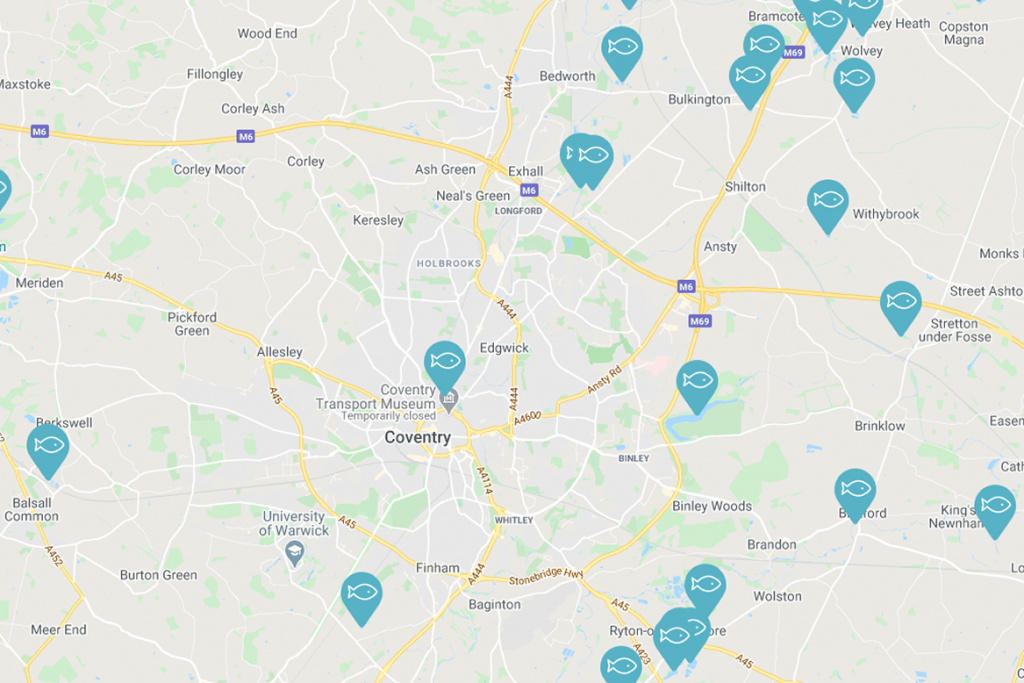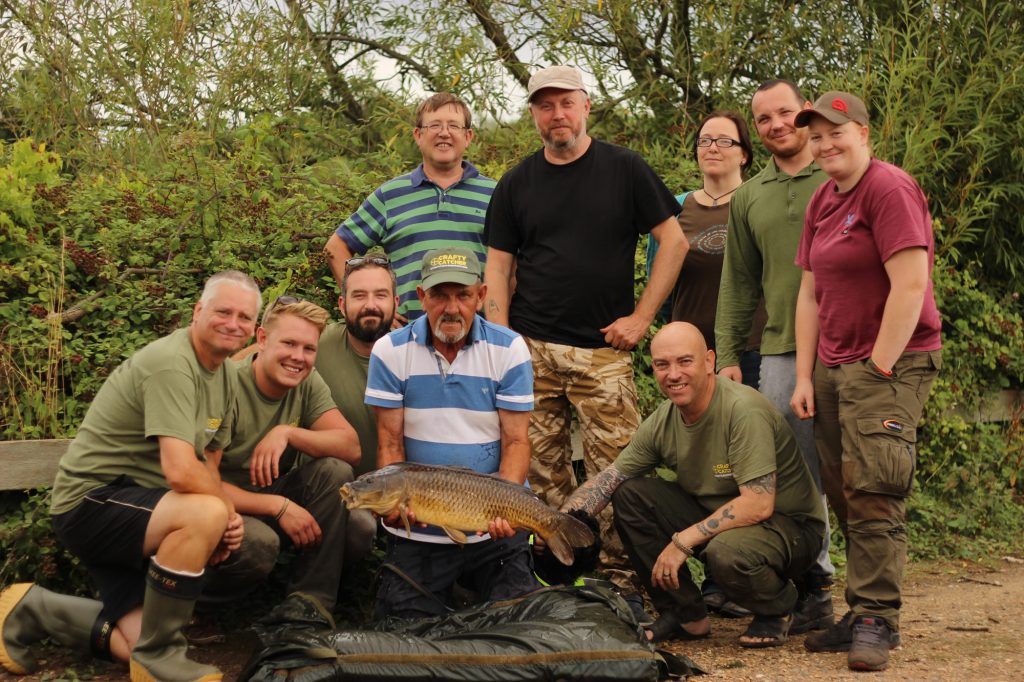
Lines On The Water
Salmon conservation and its ripple effect on river health
The decline of salmon populations is gathering more and more public attention. To some, this may seem short sighted.
Why should so much attention be given to one species when there is a global biodiversity crisis happening? Understandably, it could seem that salmon get more than their fair share of attention; no doubt in part because of their legacy as a gamefish and food fish. However, salmon populations are experiencing a precipitous decline, especially within their southern range, and require urgent action. Conservation efforts may be carried out in the name of one species, but that doesn’t mean other species won’t reap the benefits.
As this species is protected under a range of legal commitments, requires clean natural ecosystems, and is part of the public consciousness, they make the perfect species to stand behind if you want to see environmental benefits from source to sea. In this blog, we will discuss how salmon conservation efforts are immensely beneficial for the wider environment, and why everyone should rally behind this iconic species.
Habitat Restoration
Restoring the natural habitats of Atlantic salmon is a primary focus in conservation efforts. In the 21st century, many rivers have been modified for short term human benefit. Often this involves the straightening of rivers, canalising them to become more equal in depth and water flow throughout. This is far different from a natural river, with its mix of deep pools, fast riffles, and twists and turns throughout.
Without this array of different microhabitats, there is no way for a river to support the rich food web required for juvenile salmon and other organisms as it removes the ability of a river to hold a wide variety of species with different lifestyles, referred to as niche spaces. Canalised rivers also lack enough diversity of habitat to give fish a choice when reacting to the environmental conditions.
One way they do this is by moving in and out of deep pools depending on the temperature or water flow. By re-meandering rivers, that is introducing twists and turns, it will help create both deep pools and areas of gravel build up to form riffles. Restoring a river to this more natural state will create suitable habitat for a vast array of native fish, vegetation, and insects, maintaining biodiversity and the health of the ecosystem. Salmon habitats are also commonly degraded by the sedimentation of our rivers. Sediment runoff into rivers is exacerbated by many agricultural practices and by the removal of riparian habitat. This can lead to gravel that is vital for salmon reproduction being smothered by fine sediment, dooming salmon eggs, fish, plants, and macroinvertebrates which occupy the gravel. Through the enhancement of riparian zones, the area of vegetation/woodland at the interface of land and waterways, plant roots can trap sediment by fortifying riverbanks. This reforesting of the riparian zone brings with it a host of benefits for salmon and the surrounding environment, making it powerful tool for holistic salmon conservation work.
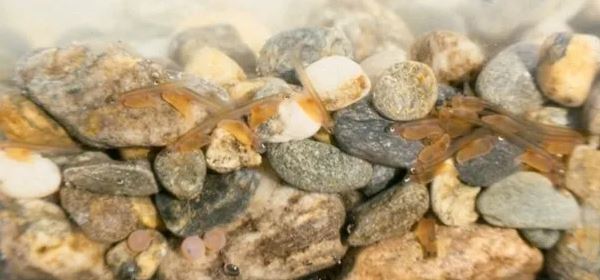
Salmon fry hatching amongst gravel
Upholding Water Quality and Flow
In recent years, the U.K.’s water quality issues have been in the public spotlight. Pollution of our rivers has been at the forefront of this. As most of Britain’s rivers have evolved as low nutrient systems for millions of years, Atlantic salmon are highly sensitive to changes in water quality. This makes Atlantic salmon an indicator species, as a thriving population can be used as markers of a healthy ecosystem. As such, much of the work we do involves improving water quality.
This benefits not only salmon but also other aquatic species that rely on clean water for survival. Perhaps the best example of this would be aquatic macroinvertebrates, the larval form of insects and crustaceans, which form a crucial part of the aquatic food web. These organisms are sensitive to pollution, and their presence also indicates a healthy ecosystem. They eat leaves, algae, and bacteria both living (primary consumers) and dead (detritovores). They then transfer this energy up the food chain as they are a main prey of many fish and birds and making them ecologically crucial. By working towards improving water quality for salmon, these macroinvertebrates and their predators will benefit greatly. Water quality isn’t the only river condition that can affect salmon populations, as changes in water quantity can have serious implications as well.
Too much water during a flood can wash away salmon habitat in the form of vegetation both within the river and on the bankside, or the gravel and stones they make their redds (nests that salmon create to lay eggs in) with. Too little water can make certain barriers impassable and create bottlenecks where they are vulnerable to predation. On top of that, lower flows allow rivers to heat up, increasing the risk of algal blooms and fish kills.
These issues affect all organisms that interact with our rivers and streams. In times of flood, aquatic plants and riparian zones being washed away will remove the shelter of a species that rely on this habitat. Likewise, in times of low flow, especially during summer, other fish species that require cool oxygenated water, such as trout, pike, grayling, may not be able to cope with the stressful river conditions. Salmon conservation seeks to address these issues, with the over-abstraction from water companies being prosecuted by Missing Salmon Alliance member Fish Legal.
In-river work to re-meander rivers, create leaky dams, and planting large riparian zones are examples of work commonly carried out by many Missing Salmon Alliance members. These actions, although done for salmon first and foremost, will immensely benefit and foster biodiversity in our rivers.
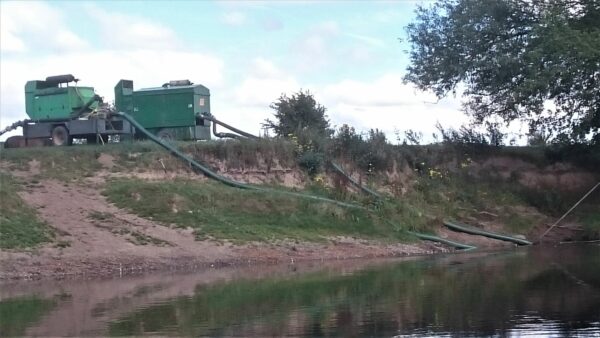
Agriculture abstraction on the River Wye during drought
Maintaining River Connectivity
A common focus on salmon conservation projects is ensuring the connectivity of rivers and upland streams, allowing for the natural movement of fish and other aquatic organisms. Often, this is done through the installation of fish passes, structures installed alongside dams and weirs which allow the migratory fish passage around an obstacle and finishing their epic upstream journey.
Proper fish pass installation can unlock miles of habitat previously inaccessible by manmade structures although it should be noted that the best designed fish pass is only 80% efficient in allowing all fish species to pass. This helps not only salmon but other protected migratory fish species such as migratory brown trout, European eel, and allis shad. In some cases, dams and weirs are removed altogether. In this scenario, it’s not just migratory species that benefit. Dams and weirs can completely alter the flow of a river on either side, creating unnatural conditions that native species are not adapted for. Removal of these blockages restores the natural hydrology of the river of the site, promoting biodiversity and ecosystem health.
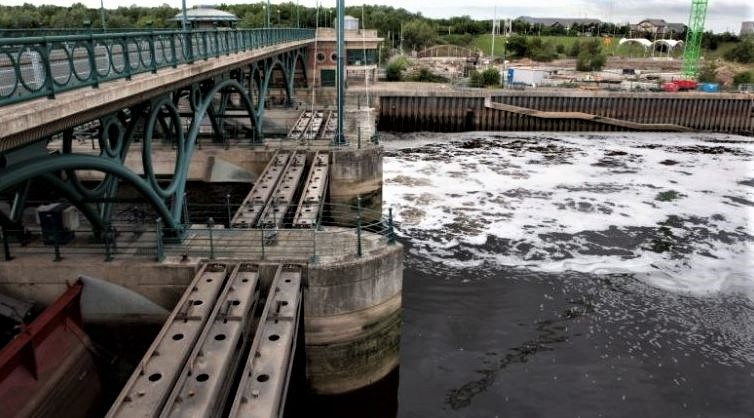
Tees Barrage
Climate Change Resilience
Atlantic salmon are a cold-water species. This is made clear by the recent shrinking of their southern range. Although this species’ range once extended down to Spain, England and Wales now represent a southern limit for viable salmon populations, salmon eggs show a marked increase in mortality if river temperatures go above 12 C. This means mitigating for climate change is a serious concern, as any potential rise in temperature could seriously endanger our already threatened salmon.
Already we have seen the impacts of warm winters and extreme summer heat waves. Creating large areas of shade by bankside tree planting is incredibly effective at cooling rivers, modern satellite mapping enables trees to be planted in areas to maximise impact. This is an environmentally holistic approach and that will be integral for making rivers more resilient to changes in temperature. This is beneficial for more than just salmon, but all river species. The riparian habitat created through tree planting will also become host to a massive array of birds, amphibians, and mammals, all of which play a part in a well-rounded ecosystem.
Therefore, actions taken to mitigate climate change effects, such as tree planting, can have positive effects on a broad range of species that inhabit the river and its surrounding environment.
In summary, Atlantic salmon conservation efforts can have far-reaching positive effects on ecosystems, contributing to the well-being of various species and promoting overall biodiversity and environmental health. Funding for environmental issues is limited, making it crucial that our efforts aren’t spread too thin to be effective.
Rallying behind the cause of salmon conservation, we can bring about change that will also have far-reaching benefits for all the surrounding ecosystems. This is exactly what we do as members of the NGO coalition the Missing Salmon Alliance with our partners the Atlantic Salmon Trust, Fisheries Management Scotland, Game and Wildlife Conservation Trust, The Rivers Trust, and Fish Legal. By combining expertise, coordinating activities, and working alongside government agencies such as the Environment Agency, we work towards effective management solutions to help wild Atlantic salmon survive and thrive in our rivers and seas in a way that is beneficial to the wider environment.
If you want to learn more about the Angling Trust’s work on safeguarding salmon, please read our Salmon Manifesto for England and Wales. If you would like to learn about the work of the Missing Salmon Alliance and its partners, click here.
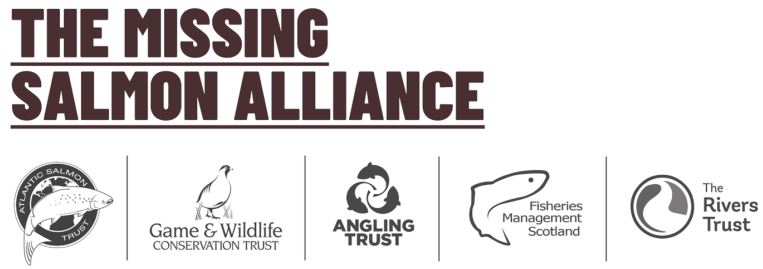
You might also like

What to do if fish are gasping or spawning.…

WORLD CHAMPS GOLD FIRMLY IN THE SIGHTS OF ENGLAND…

We Fish as One supports Pride Month 2025

Sunglasses giant backs Angling Trust

Join in with the Check, Clean, Dry campaign this…

From TikTok to the classroom – Orchard School follows…

DRENNAN ENGLAND FEEDER TEAM WIN WORLD CHAMPS!

Family fishing at Aston Park Fisheries where have a…

FOURTEEN SIDES ALREADY THROUGH TO SUPERCUP ROUND 2!

SIXTH FOR ENGLAND AT FLY WORLD CHAMPS

Much needed new European Management Plan for Cormorants moves…
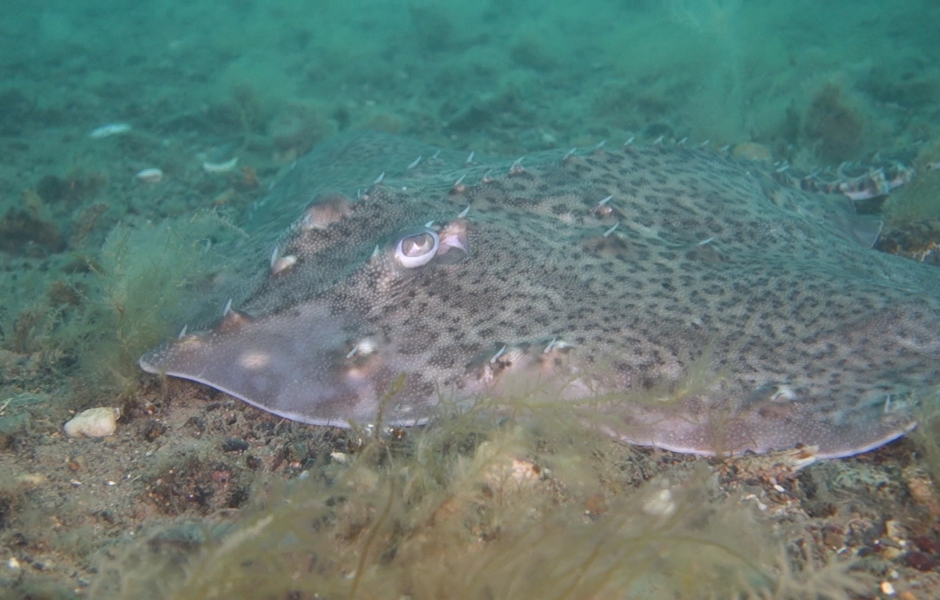
A Turning Tide: Why Ending Bottom Trawling in MPAs…

What to do if fish are gasping or spawning.…

WORLD CHAMPS GOLD FIRMLY IN THE SIGHTS OF ENGLAND…

We Fish as One supports Pride Month 2025

Sunglasses giant backs Angling Trust

Join in with the Check, Clean, Dry campaign this…

From TikTok to the classroom – Orchard School follows…

DRENNAN ENGLAND FEEDER TEAM WIN WORLD CHAMPS!

Family fishing at Aston Park Fisheries where have a…

FOURTEEN SIDES ALREADY THROUGH TO SUPERCUP ROUND 2!

SIXTH FOR ENGLAND AT FLY WORLD CHAMPS

Much needed new European Management Plan for Cormorants moves…

A Turning Tide: Why Ending Bottom Trawling in MPAs…

What to do if fish are gasping or spawning.…

WORLD CHAMPS GOLD FIRMLY IN THE SIGHTS OF ENGLAND…

We Fish as One supports Pride Month 2025

Sunglasses giant backs Angling Trust

Join in with the Check, Clean, Dry campaign this…

From TikTok to the classroom – Orchard School follows…

DRENNAN ENGLAND FEEDER TEAM WIN WORLD CHAMPS!

Family fishing at Aston Park Fisheries where have a…

FOURTEEN SIDES ALREADY THROUGH TO SUPERCUP ROUND 2!

SIXTH FOR ENGLAND AT FLY WORLD CHAMPS

Much needed new European Management Plan for Cormorants moves…

